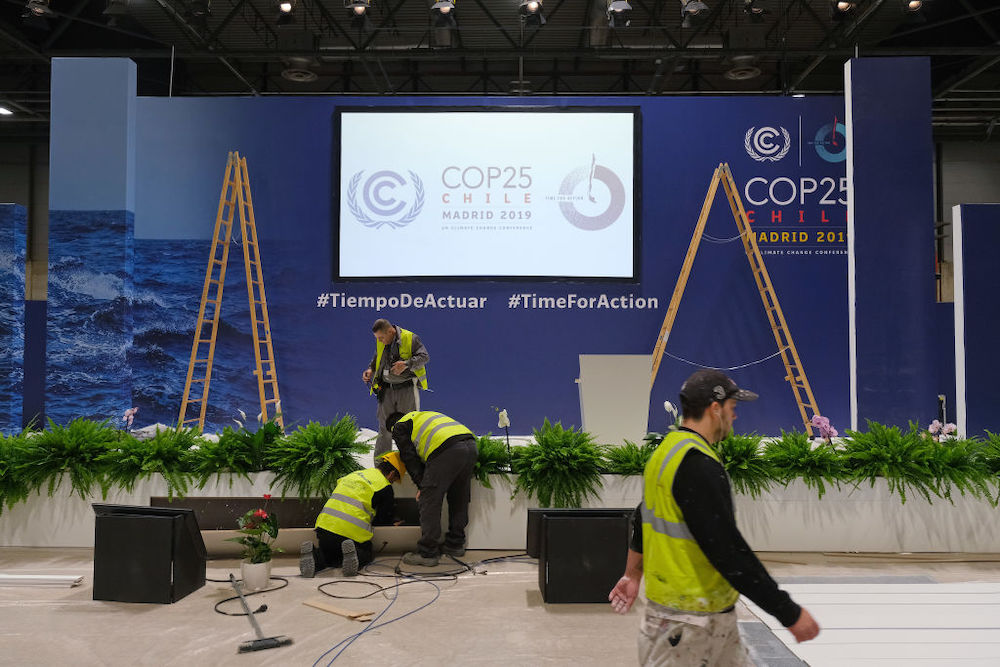- Amid fears that the coronavirus crisis will set back climate-change goals, Chile raises targets and says carbon emissions will peak by 2025.
- The country plans to achieve carbon neutrality by 2050 and put stronger caps on greenhouse-gas emissions for 2030.
- Chile becomes the seventh country to update its NDCs — national determined contributions — and long-term decarbonization strategies as required this year by countries party to the Paris Agreement.
In the midst of worries that countries will slide on their environmental commitments, Chile has chosen to strengthen its long-term commitment to slashing greenhouse-gas emissions.
Three government ministers from the South American nation — which chairs the international effort to combat climate change — donned masks and presented the new plan through a broadcast on Facebook last week. It came shortly after COP26, the world’s biggest climate conference, was canceled until next year because of the COVID-19 pandemic. Chile presided over the previous summit.
While Chile’s targets were promising for climate activists, the timing is perhaps even more so, given recent fears that climate-change efforts would be sacrificed amid the global effort to combat COVID-19. The postponement of COP26 to 2021 was considered a blow because the gathering was at the crucial five-year mark designated by the Paris agreement to assess the world’s progress in achieving climate goals and determine whether new ones were necessary.
“Even in this difficult situation, Chile — which holds the current COP presidency — is able to tell the world that climate responsibility must remain a policy priority, with a view to ensuring well-being for citizens now and their sustainable development,” Manuel Pulgar-Vidal, leader of the World Wildlife Fund’s global climate and energy practice, said in a statement.
Chile plans to achieve carbon neutrality by 2050 by phasing out coal power, promoting electric vehicles and expanding forests. It also caps annual greenhouse-gas emissions at 95 million metric tons of carbon dioxide by 2030. That figure is “substantially” tougher than the country’s pledge in the 2015 Paris Agreement and even stronger than its draft proposal, according to Climate News.
Countries that are part of the Paris Agreement are supposed to pull together their updated NDCs — or nationally determined contributions — and long-term decarbonization strategies by the end of this year, something that climate advocates have feared would fall by the wayside in the wake of the coronavirus and the economic meltdown it has triggered.
“Climate action remains a non-negotiable global priority,” Pulgar-Vidal’s message read. “This message must be clear to all those countries that may use the current health and economic crisis as an excuse to postpone decisions and actions on climate responsibility.”
Last week’s announcement makes Chile the seventh country to update its pledges, joining the Marshall Islands, Suriname, Norway, Moldova, Japan and Singapore. Other countries have until the end of the year, under the terms of the Paris Agreement.
“We are ready to support all #ParisAgreement member states in formulating their updated and more ambitious #NDCs, which need to be presented in 2020,” Patricia Espinosa, executive secretary of the UN Framework Convention on Climate Change, said on Twitter.
As for Chile, Carola Urmeneta, director of climate change at Chile’s environment ministry, told Climate Home News that she hoped a draft climate law will pass this year: “We wanted to go ahead because the climate crisis is also an emergency, and we need to work on that,” she said.
Photo by Sean Gallup/Getty Images

























